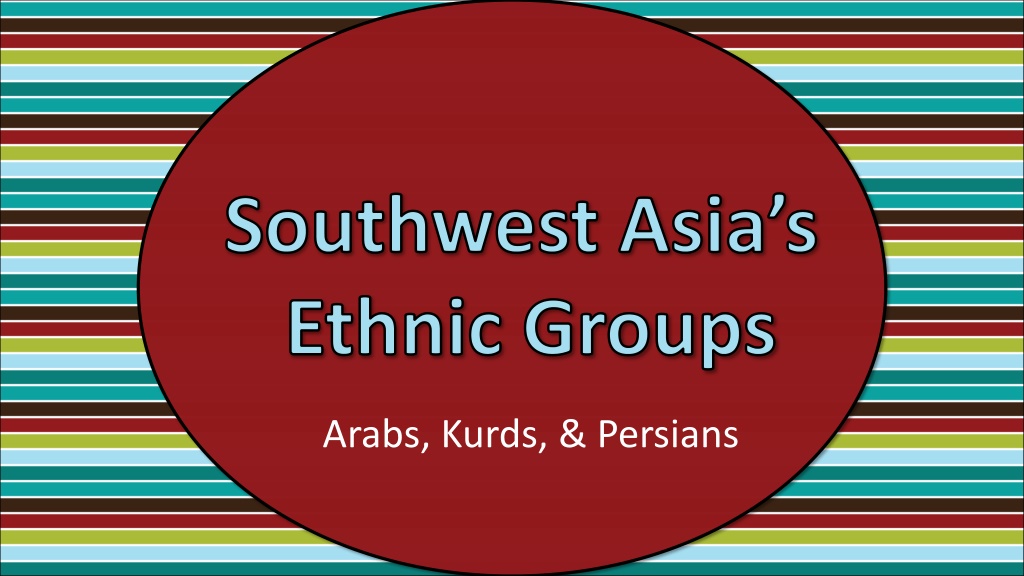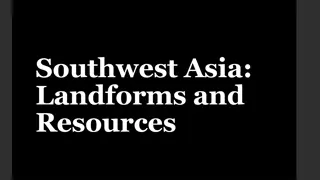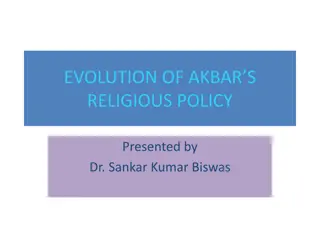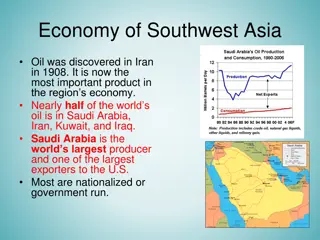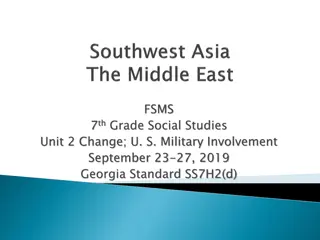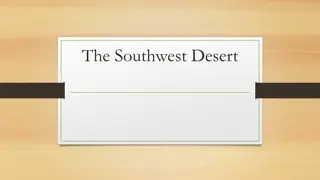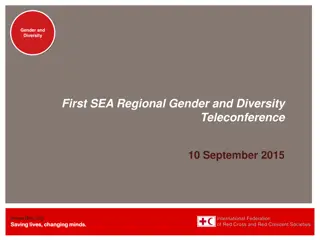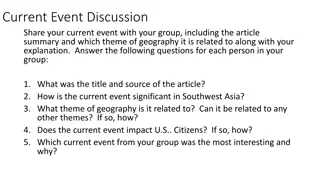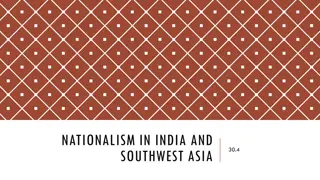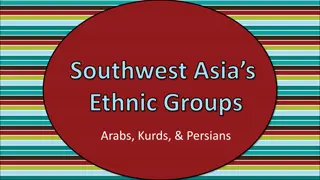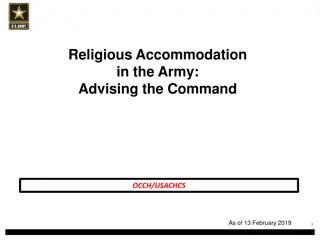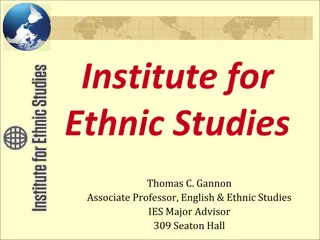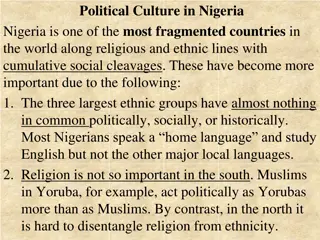Ethnic and Religious Diversity in Southwest Asia
Southwest Asia, home to diverse ethnic groups like Arabs, Kurds, and Persians, also exhibits a variety of religions among these communities. Exploring the shared culture and belief systems within these groups can provide insight into the rich tapestry of traditions, history, and practices in the region.
Download Presentation

Please find below an Image/Link to download the presentation.
The content on the website is provided AS IS for your information and personal use only. It may not be sold, licensed, or shared on other websites without obtaining consent from the author.If you encounter any issues during the download, it is possible that the publisher has removed the file from their server.
You are allowed to download the files provided on this website for personal or commercial use, subject to the condition that they are used lawfully. All files are the property of their respective owners.
The content on the website is provided AS IS for your information and personal use only. It may not be sold, licensed, or shared on other websites without obtaining consent from the author.
E N D
Presentation Transcript
Southwest Asias Ethnic Groups Arabs, Kurds, & Persians
Standards SS7G8 The student will describe the diverse cultures of the people who live in Southwest Asia (Middle East). b. Explain the diversity of religions within the Arabs, Persians, and Kurds.
Southwest Asias Ethnic Groups Arabs, Kurds, & Persians
Ethnic Groups This is a group of people who share a common culture. These characteristics have been part of their community for generations. Ethnic groups can have many things in common: Shared history, common ancestry, language, religion, traditions, beliefs, holidays, food, etc. All of these things make up a common culture that is shared by the members of the ethnic group.
Religious Groups This is a group of people who share a belief system. They believe in the same god (or gods) and have common sacred text with a specific set of rules about how to live. Religious groups have many things in common: God(s), prophets, prayers, history, sacred text, religious laws, holy days, etc. People from different ethnic groups may share the same religion; however, they may be from different cultures.
Arabs Location Arabs comprise most of the population of Southwest Asia. Arabs also live in the United States, Canada, parts of northern Africa, and Europe.
Arabs Ancestry Arabs of Southwest Asia believe themselves to be descendants of Abraham through his son Ishmael. Arabs make up the majority of the people who live throughout the Middle East.
Arabs Religion Most Arabs practice Islam. Small numbers of Arabs practice other religions. Not all Arabs are Muslims, and not all Muslims are Arabs. Islam consists mostly of two different groups. The majority of Muslims practice Sunni Islam. Most others practice Shi a Islam. Sunnis and Shi a disagree about who is in charge of the Muslim world. Small numbers of Arabs practice other religions. Some Arabs are Christians.
Arabs Language Most Arabs, whether they are Muslim or Christian, speak Arabic.
Kurds Location The Kurds are an ethnic group that live in Turkey, Syria, Iraq, and Iran. Kurds form almost 20% of the population of Turkey and Iraq. Many Kurds live in an area of northern Iraq called Kurdistan (not a separate country). They are the largest ethnic group in the world without a country of their own. Many Kurds hope to have a nation of their own some day. This has caused conflict with the countries in which Kurdish people live.
Kurds Ancestry Kurds of Southwest Asia believe themselves to be descendants of the Medes, an ancient Iranian people. In fact, Kurds share many aspects of their culture with Iranians.
Kurds Religion Like the Arabs, the Kurds are overwhelmingly Muslim Kurdish Muslims tend to be less strict about certain Islamic practices. For example, there are fewer laws for how Kurdish women should dress than there are for Iranian and Arab women.
Kurds Language Kurdish is an Indo-European language related to Farsi (Persian) and other Iranian languages. There are many different dialects of Kurdish spoken throughout Southwest Asia.
Persians Location Persians are those who live in the modern country of Iran. They make up about half of Iran s current population. The country of Persia became known as Iran in 1935. There is written evidence (cuneiform) that was found in Iran that proves that Persia was the name of this area since its beginning. Today, Persians can be found living in Afghanistan, Tajikistan, Uzbekistan, Pakistan, and the Xinjiang province of China.
Persians Ancestry The Persians lived in Iran before the arrival of Islam in the 7th century. The Persians ancestors were Indo-Europeans who migrated from central Europe and Southern Russia and formed a great empire.
Persians Religion Most Persians in Iran practice Islam, but some are other religions. Persian women have faced many challenges as a result of strict cultural and religious practices.
Persians Language Persians speak a language called Farsi (or Persian). It is one of the oldest languages that is still spoken today! Where Farsi is Spoken Today
